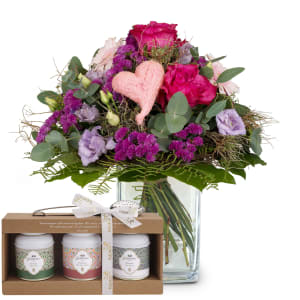Gottlieber specialties
Here you will find the story of a woman who developed normal wafers into a speciality and find out what makes our cocoa almonds so special.

Gottlieber Hüppen - Special Edition for Fleurop
Lovingly made Gottlieber Hüppen are baked the world over in accordance with a traditional recipe, rolled piece by piece like a cigar leaf and individually
finished off with fillings made from the finest Swiss chocolate and melt-in-the-mouth gourmet creams.



The selection of three flavours in ONE pack is exclusively available from Fleurop.
The pack contains eight individually wrapped premium wafer rolls in the flavours Irish Cream, Cappuccino and Amaretto.
Surprises don't come any more charming: because flowers have always won hearts, and their combination with 120 g of Gottlieber Premium Hüppen,
Special Edition for Fleurop, is irresistible. In addition, Gottlieber Hüppen are also available with loving messages such as «For You» or «With Love.»

Rolled wafers - the start of a success story
The Hüppen's predecessors were flat wafers, made from flour and water.
Then someone had the idea of enriching the batter with honey and rolling the warm wafer. This was how the wafer rolls – Hüppen – were invented.
However, they were no great delicacy back then.
It is even thought that the word «Hüppe» is derived from the Middle German word «hippig», which more or less means «lean» or «poor».

So, the Hüppen of those days were a poor dish, which probably appeared in Switzerland in the 14th century.
However, sugar was introduced in the 16th century and Hüppen were transformed.
They then became a festive product, were soon known as such all over Switzerland, and were served up at table with whipped cream.
Also in Gottlieben on Lake Constance, which made a name for itself in Hüppen production early on. Ex-Queen Hortense Bonaparte enjoyed
the «gaufrettes» from Gottlieben when she lived at Schloss Arenenberg.
Another enthusiastic fan of this specialty was her famous son Louis Napoleon, who later became Emperor of France.
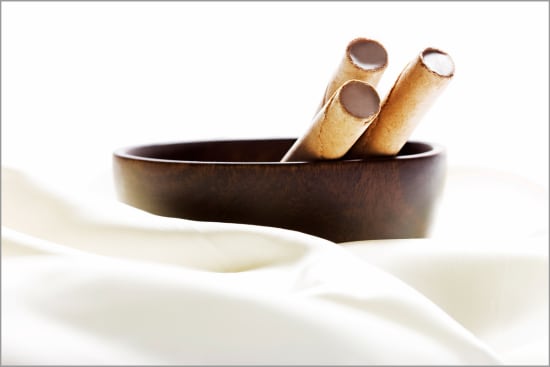
But we are talking here «only» about hollow rolled wafers – Hohlhüppen.
It was not until a long time later that someone had the phenomenal idea of filling them with chocolate.
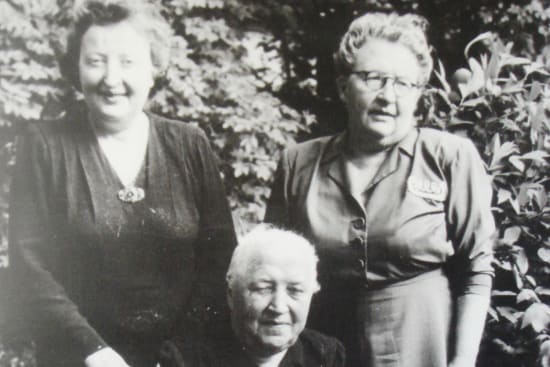
A clever woman develops filled Gottlieber Hüppen
The story of the filled Hüppen began with Elisabeth Wegeli of Gottlieben, who was initiated into the art of baking the rolled wafers by her neighbour
in 1928. When her neighbour had to give up her trade,
Elisabeth Wegeli bought the wafer iron from her. Together with her daughters, she began to produce Hüppen.
To make the wafers, she poured the sweet, thin mix of flour, egg yolk and sugar in a very thin layer onto the iron, closed it and left the batter
to cook for a good minute at around 160 degrees Celsius. She then rolled the wafers with a thin iron rod while they were still warm -
and the Hüppen from the new Hüppen bakery were done.
By the way, back then most Hüppen bakers kept one fingernail long so that they could remove the hot wafers from the iron.

People loved the taste of Elisabeth Wegeli's Hüppen even when they were hollow. The idea of filling the rolled wafers did not arise for another ten years.
In 1938, the shrewd businesswoman developed a praline filling for the empty Hüppen.
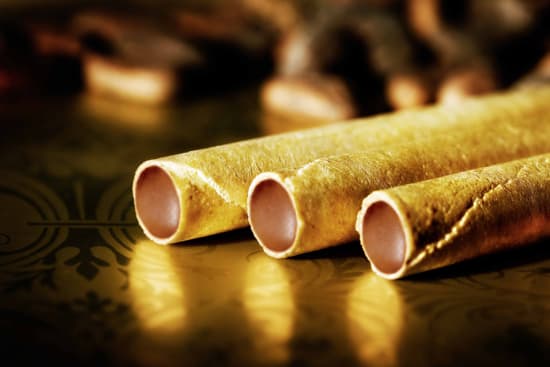
How Gottlieber Hüppen are made today
At the family-owned Swiss company Gottlieber, the 0.7 mm thin wafers are still lovingly and individually baked and still rolled individually
like the leaf of a high-quality Havana cigar. This is done carefully and precisely, as if by hand. The Gottlieber Hüppen are then individually
filled with either gently-melting gourmet creams or Swiss chocolate and individually packaged by hand.
Only the best Swiss chocolate and finest gourmet creams are used for the fillings, which are all composed in Gottlieben.
Many of them have even won gold awards. Customers appreciate the enjoyment of Gottlieber Hüppen and their extremely high quality.
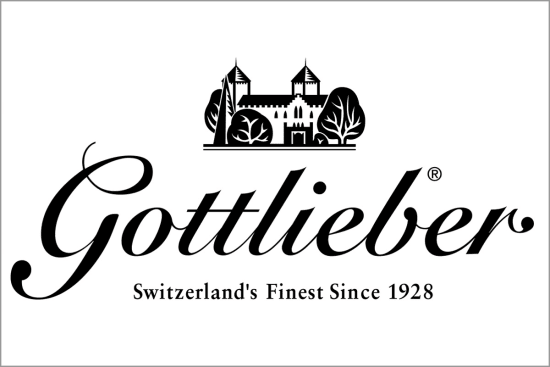
Ingredients and an ambitious corporate philosophy
Gottlieber Hüppen contain:
Non-hydrogenated fats from sustainable production (RSPO-SG certified), no artificial preservatives,
no synthetic flavors and no genetically modified ingredients.
On top of that, the company is committed to treating our Earth's limited resources responsibly and
therefore places high priority on purchasing within its home region and avoiding unnecessary transport miles.

Not least, Gottlieber Spezialitäten AG chooses high-quality, certified and organically
grown ingredients and fair trade raw materials (cocoa and coffee) and uses only organic, free-range eggs.
Thanks to FAIR POWER we also power our operations from renewable Swiss sources. The cocoa is UTZ certified, which stands for sustainable
cultivation and better future prospects for the farmers, their families and our planet. Thanks to Fair Power, Gottlieber also power its
operations from renewable Swiss sources. The company’s facility is FSSC 22000 (Food Safety System Certification)
certified and the products are always inspected according to strict standards of quality (according to HACCP principle).
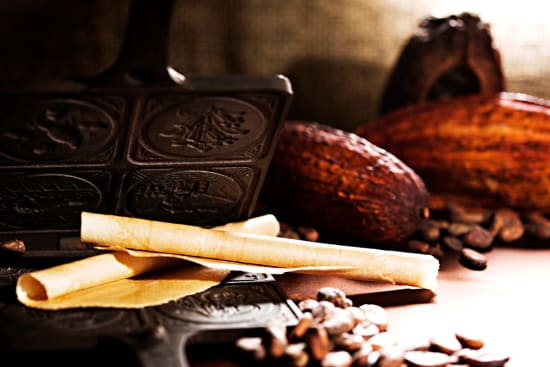
Gottlieber cocoa almonds – simply irresistible!
Carefully roasted almonds from Gottlieber Spezialitäten AG are coated with exquisite, melt-in-the-mouth chocolate and sprinkled with the finest cocoa powder.
The result is tempting: crunchy and harmonious in flavour – pure pleasure.
These classy, crunchy pieces come in an exclusive round 200 g pack, turning a delicious present into a true highlight.

In short: when a feast for the eye is combined with a feast for the palate, nothing can go wrong.
Because flowers are an emotional gift and win hearts, while cocoa almonds are tempting and make the recipient melt in quite a different way.

How almonds conquered the world
Admittedly, Gottlieber has made almonds into something quite unique.
But in actual fact they have been known since early times. Almond trees have been cultivated in Asia since the early Bronze Age.
And their fruits weren't just a snack for caravan leaders on the Silk Road. They were also valuable ingredients in the bread of the Egyptian pharaohs.

By 900 BC, almond trees were growing in Spain, Morocco, Greece and Israel.
But it wasn't until the 18th century that Franciscan monks brought some trees from Spain to California,
where by around 1870 the most famous varieties of almond were developed through research and breeding.

In the last 30 years, almond production in California has quadrupled. And in the green valleys around San Joaquin and Sacramento, almonds are actually cultivated on more than one million hectares of land.
Around 6,000 almond farmers there produce almost 100 percent of US domestic requirements and more than 75 percent of global demand.
Today, Californian almonds are imported by around 80 countries, including Switzerland.
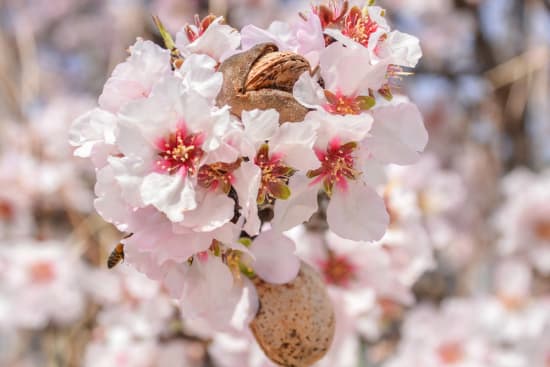
Almond dream: from the tree directly into the chocolate bath
Almond trees blossom in February and March. However, they are not harvested until the end of August to mid October.
That means a lot of work. Because to make it easier to strip the fruit from the tree,
the trees are subjected to moderate dry stress a few weeks before the harvest.
Then machines drive up and shake the trees. The fruit is left to lie on the ground for about a week to dry it well, then it is collected and freed from dust,
twigs and leaves.
The shells of the almonds are gently cracked open in rolling mills and blown away, then almond processing finally begins.

Firstly, they are separated into different sizes using sieves, and eye-checked for damage on conveyor belts. The bad ones are removed at this stage.
The almonds are shelled by heating them in boiling water so that the soft skin can be easily removed by rubber rollers.
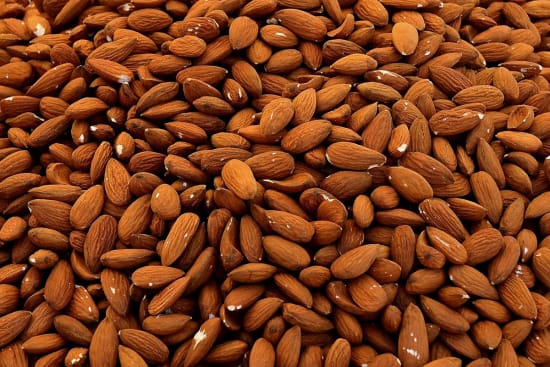
And then?
Well, almonds that are very, very lucky end up at Gottlieber,
are carefully roasted, given a beautiful chocolate jacket and sprinkled with the finest cocoa powder.
More loving & high-quality additional gifts
Gottlieber specialties
Here you will find the story of a woman who developed normal wafers into a speciality and find out what makes our cocoa almonds so special.
Chocolate from Maestrani
Why is chocolate good for morning grouchs? Who paid with cocoa beans? And why do ladybirds bring good luck? Answers to these and other questions can be found here.
Honey from Bee-Family
Want to learn more about an irresistible honey? To dive into the world of honey, honey hunters and bee transhumance and know how to store honey? Read here.
Tea from Gottlieber
Which tea is called «gunpowder»? Which type of tea was picked by monkeys? And how is Moroccan tea made? Answers to these questions and more can be found here.
Red wines Amarone and Ripasso by Albino Armani
Here more about our red wines: the Azienda Albino Armani, a wine made from dehydrated grapes, the «accident» called Amarone and a film that will make you dream.
Prosecco Albino Armani
When may a wine be labelled Prosecco? What is meant by Brut or Extra Dry? Who is Albino Armani? And what can dreams look like? Here you will find the answers.
Teddy bears
More about the «birth» and success story of the cute teddies as well as all kinds of information about teddy bear days, teddy bear records or teddy museums can be found here.
Avelines pralines - a melt-in-the-mouth treat
Are pralines your greatest pleasure? The ideal gift for special moments, a reward, an anti-stress remedy, or a bedtime snack? Then try our Avelines pralines, a premium treat of the finest quality.








